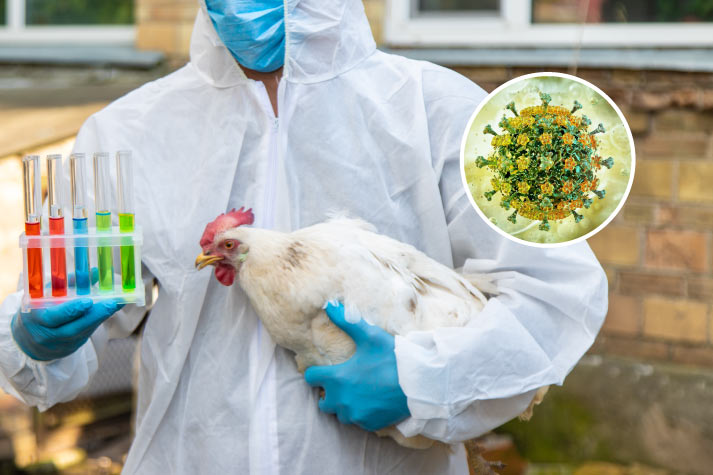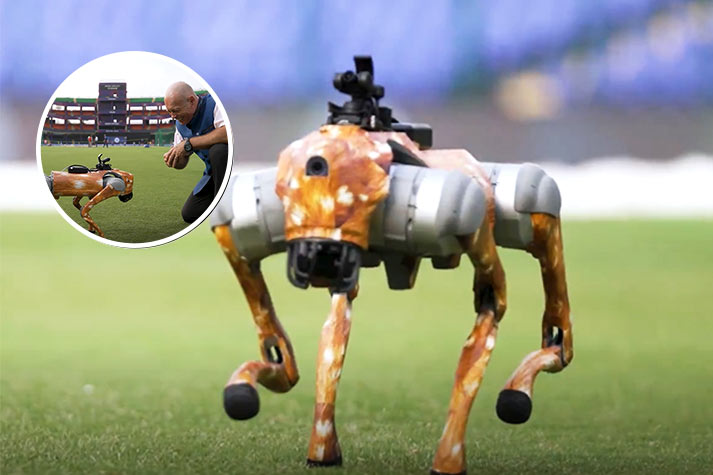
08 Apr
Bird Flu in India: Tigers, leopards, and even pet cats infected by H5N1 virus
After the recent death of a child in Andhra Pradesh from the H5N1 virus and a wave of avian flu outbreaks sweeping across multiple states, India’s bird flu situation seems to have entered a worrisome chapter.
Once confined to poultry, the virus is now spilling over into unexpected territory, infecting wild species like tigers, leopards, jungle cats, and even domestic pets like house cats. This shift signals a dangerous trend; cross-species transmission is hardly ideal when it comes to a zoonotic disease, and could pave the way for broader zoonotic threats.
The growing urgency around the virus’ evolution was front and centre during a high-level meeting of the Department of Animal Husbandry & Dairying (DAHD) on April 4. Led by DAHD Secretary Alka Upadhyaya and held in New Delhi, the session brought together top scientists, poultry industry representatives, and policymakers to review the outbreak and develop emergency containment strategies.
Chief among their concerns was the virus’ unusual behaviour. Crossing the inter-species barrier in such ways could have far-reaching public health consequences. Experts at the meeting stressed that the situation warrants not just rapid containment, but also closer surveillance and a unified response plan to prevent further spread.
States Affected Thus Far
So far, Maharashtra, Chhattisgarh, Jharkhand, Andhra Pradesh, Madhya Pradesh, Telangana, Karnataka, and Bihar have reported outbreaks of bird flu in poultry, with 34 epicentres identified and six still active.
The virus isn’t staying still either. Current hotspots have emerged in key districts across multiple states; Jharkhand’s Bokaro and Pakur, Telangana’s Ranga Reddy, Nalgonda, and Yadadri Bhuvanagiri, along with Chhattisgarh’s Baikunthpur and Korea. All evidence points to a steady east-central spread of the outbreak.
In Andhra Pradesh, the government has declared several districts as either infected or under active surveillance, including West Godavari, East Godavari, Kurnool, Eluru, NTR, and Kakinada. In response, strict containment protocols are now in force, with a 10-kilometre ban on poultry movement around each affected zone to curb further transmission.
Vaccine Strategy Gains Ground, But Gaps Still Remain
In a key move, the Department of Animal Husbandry & Dairying has greenlit the commercial rollout of an H9N2 low pathogenic avian influenza (LPAI) vaccine developed by ICAR-NIHSAD. A nationwide evaluation of its field effectiveness is already underway, marking an important step in preventive control.
However, the path to deploying a vaccine for the more dangerous H5N1 strain (classified as highly pathogenic avian influenza (HPAI)) remains cautious and unresolved. While poultry industry leaders are pressing for vaccination as a buffer against deepening economic losses, experts at the DAHD meeting warned that existing HPAI vaccines fall short of offering sterile immunity. They primarily reduce viral shedding rather than halting transmission outright.
Given these limitations, the panel recommended further scientific evaluation before any rollout, while also initiating efforts to develop a domestically produced HPAI vaccine tailored to India’s needs.






AUTHOR’S BIO
Carry My Pet
Passionate pet enthusiasts and globetrotters, dedicated to easing furry friends' journeys worldwide. Penning tales of compassion at CarryMyPet, where every relocation is a tail-wagging adventure.